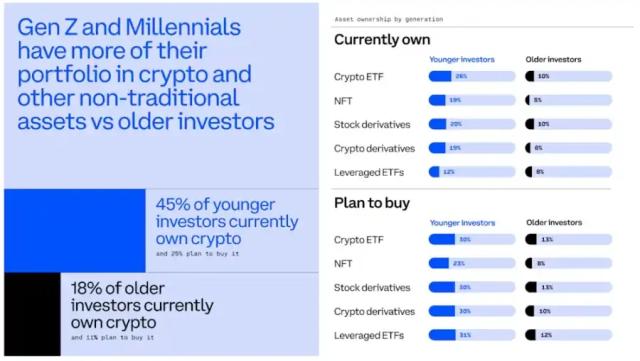The essence of Based Rollup is essentially another new "Rollup AS A Service" service paradigm that is more dependent on the functions of the Ethereum mainnet (Proposer +AVS). It can not only allow layer2 to enjoy more security and decentralization features of the Ethereum mainnet, but also allow the newly constructed encapsulated services of Based Rollup and AVS to have a larger market landing.
Author:Haotian
Cover: Puffer Finance
The market has been discussing the innovative L1-Sequenced ordering method of Based Rollup for a long time. Recently, Puffer Finance has built a UniFi layer2 solution based on Based Rollup + native AVS verification system. How do you view it? Next, let's talk about my understanding:
1) Based Rollup is essentially a solution that outsources the "ordering" function to the L1 mainnet. The Proposer on the mainnet will directly package the transactions submitted by Based Rollup when building the Block. This can solve the centralized Sequencer problem that layer2 has been criticized for.
However, the problem is that Based Rollup can only do ordering and cannot directly intervene in the off-chain consensus consistency problem of layer2. In simple terms, if there are N Based Rollup layer2s, they all have a point-to-point relationship with the Ethereum mainnet, and they are disconnected from the single-line connection with Ethereum. It is unlikely that these layer2s will achieve interoperability.
Therefore, the idea of the UniFi solution is to introduce the decentralized AVS verification service, and then provide the "verification" service for the transactions submitted by Based Rollup to the mainnet in addition to "ordering".
AVS (Active Verification Service) is a verification service that relies on L1 verification nodes to provide additional security consensus. The Eigenlayer protocol has already brokered many AVS landing application scenarios, including Oracle, decentralized Sequencer, MEV, intent transactions, etc., which are essentially doing Pre-Confirmation preprocessing work.
The difference is that Puffer, like Eigenlayer, is also an Ethereum ecosystem node verification infrastructure, and Puffer can directly promote the landing of Based Rollup based on its own AVS verification system.
This not only implements the new UniFi Based Rollup layer2 solution, but also practices the possibility of AVS providing security consensus for layer2, and at the same time, based on the preprocessing mechanism provided by this Pre-Confimation mechanism, it will become the unified interoperability center of the currently fragmented layer2, that is, the point-to-point relationship between layer2 and L1 can be changed to a multi-point relationship between layer2 and the UniFi service package.
2) How to do it specifically?
When users initiate transactions on the UniFi layer2, the transaction batches are directly submitted to the layer1 Proposer node for packaging, and after the transaction ordering, the AVS nodes provide the "verification" service for security consensus, thereby achieving a "fast" pre-confirmation. In contrast to the traditional layer2 Batch transaction, which first requires on-chain confirmation on layer2 and then final confirmation on the mainnet.
The entire UniFi layer2 process only participates in receiving and executing transactions, and the other ordering and verification work is all completed on the mainnet. To illustrate with an example: when users withdraw from UniFi, they can get a quick confirmation, unlike OP-Rollup which needs to wait for a 7-day challenge period.
To further optimize the finality speed, UniFi has also developed a dual verification architecture of TEE+Multiprover, which deploys the verification process in the secure enclave of the TEE (Trusted Execution Environment) for isolated processing, so that transactions can obtain the fast pre-confirmation of the TEE node cluster before waiting for the final confirmation of L1, achieving millisecond-level consensus verification.
The introduction of the TEE component not only fully utilizes the hardware computing power advantage of the verification nodes, but also provides a standardized security assurance system for the consensus mechanism of AVS, thereby establishing an efficient and reliable dual confirmation mechanism.
3) In this way, the layer2 solution of UniFi has abstracted out two encapsulated services:
1. Decentralized Sequencer service, which reuses the L1 Validators to process the transactions submitted by layer2 and be responsible for ordering, using this method can eliminate the problem of layer2 relying on centralized Sequencer.
2. Decentralized interoperability platform, we treat the UniFi Rollup chain as the first commercialized service of the Puffer mainnet Proposer ordering node + AVS verification service. In theory, this component service can be composable to more layer2 chain applications, and when more layer2 chains join the Rollup architecture constructed by UniFi, UniFi can act as a trustless asset bridge channel between these layer2 chains, and can also provide unified liquidity and application matching new services, allowing layer2 chains to achieve interoperability through UniFi.
The above.
The essence of Based Rollup is essentially another new "Rollup AS A Service" service paradigm that is more dependent on the functions of the Ethereum mainnet (Proposer +AVS). It can not only allow layer2 to enjoy more security and decentralization features of the Ethereum mainnet, but also allow the newly constructed encapsulated services of Based Rollup and AVS to have a larger market landing.
Disclaimer: As a blockchain information platform, the articles published on this site only represent the personal views of the authors and guests, and are not related to the stance of Web3Caff. The information in the articles is for reference only and does not constitute any investment advice or offer, and please abide by the relevant laws and regulations of your country or region.
Welcome to join the official Web3Caff community: X(Twitter) account丨WeChat reader group丨WeChat public account丨Telegram subscription group丨Telegram discussion group





